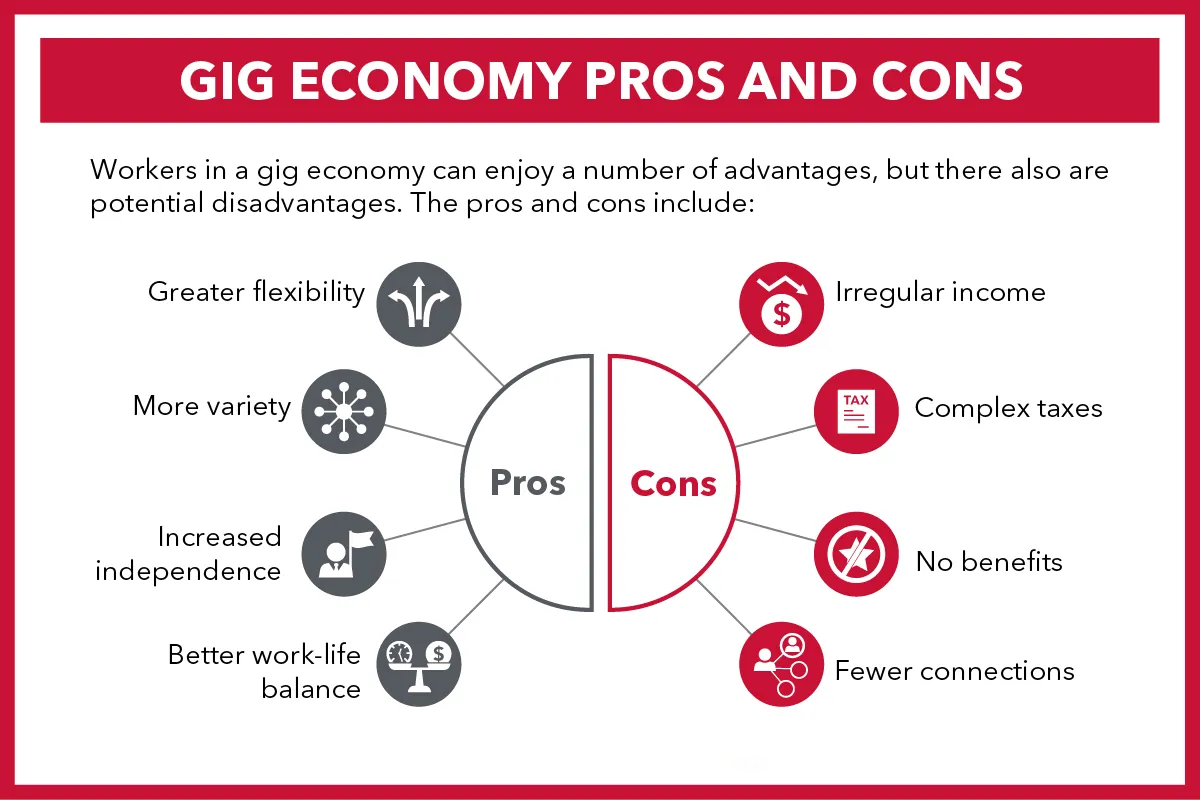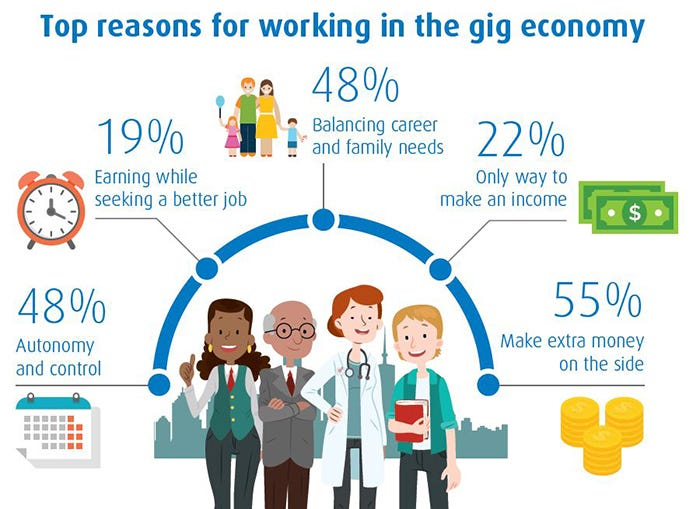Indian Economy
Future of India's Gig Work
- 17 Jun 2024
- 13 min read
This editorial is based on “From Amazon’s Haryana warehouse to the delivery boy at your doorstep- tales of oaths and indignity” which was published in The Indian Express on 17/06/2024. The article highlights the harsh conditions gig workers in India face and underscores the broader socio-economic issues that allow such exploitation, calling for better labor rights and protections.
For Prelims: Gig economy, NITI Aayog , Code on Social Security, 2020, Code on Wages, 2019, E-commerce, Heat waves, Platform Work.
For Mains: Legislative Framework Related to Gig Workers in India, Major Challenges Faced by Gig Workers in India.
India's booming gig economy, powered by the rise of startups like Zomato and Swiggy has made life more convenient for many. With just a few taps on a smartphone app, essential goods and services can be delivered right to our doorsteps. However, this convenience comes at a significant human cost borne by the army of "delivery partners'' who form the backbone of this gig workforce. These workers, often earning meager wages of Rs. 11,000 or less per month, face harsh working conditions, lack basic rights and protections, and are denied the dignity of regular employment.
According to the NITI Aayog report on India's booming gig and platform economy, the gig workforce is expected to expand to 23.5 million workers by 2029-30. The gig economy model, celebrated for its "innovation," essentially undercuts labor costs by classifying workers as "partners" rather than employees. The wide gap between the purchasing power of these workers and the affluent consumers they serve raises critical questions about the long-term sustainability of this model, both economically and socially.
What is the Gig Economy?
- About: The gig economy is a labor market characterized by short-term, freelance, or contract-based work arrangements, often facilitated through online platforms that connect workers with consumers or businesses.
- It represents a shift away from traditional, permanent employment towards a more flexible, task-based, and on-demand workforce.
- Structure:
-
Workers: Independent contractors, freelancers, or temporary workers who complete specific tasks or projects for a set fee or hourly rate.
-
Businesses/Clients: Companies or individuals who hire gig workers for specific projects or tasks rather than creating full-time positions.
-
Platforms: Often, online platforms act as intermediaries connecting businesses/clients with gig workers.
-
These platforms can handle task distribution, payment processing, and communication. (Examples: Upwork, Uber, Swiggy)
-
-
What is the Legislative Framework Related to Gig Workers in India?
- Legislative Framework:
- Code on Social Security, 2020: This act recognizes gig workers as a separate category and envisages extension of social security benefits to them.
- However, the specific rules and implementation details are yet to be finalized by individual states.
- Code on Wages, 2019: This code applies to all sectors, including gig work, and lays the foundation for a national minimum wage. However, the actual minimum wage varies depending on the state and skill level.
- Code on Social Security, 2020: This act recognizes gig workers as a separate category and envisages extension of social security benefits to them.
- Policy and Planning
- NITI Aayog Report on India's Gig and Platform Economy (2022): This report recommends promoting platform-led skilling initiatives and social security measures for gig workers. It also emphasizes the need for data collection and better enumeration of the gig workforce.
What are the Factors Driving Growth of the Gig Economy in India?
- Increased Smartphone and Mobile Penetration: Smartphone penetration and affordable internet access ( with India consuming the highest mobile data per smartphone user in the world) have created a platform for businesses to connect with workers directly.
- Changing Work Preferences: Millennials and Gen Z prioritize more work-life balance and flexibility. The gig economy offers them the freedom to choose their projects, set their schedules, and work from anywhere.
- Example: A graphic designer in Delhi can take on freelance projects on Upwork while pursuing her passion for photography. This flexibility would not be possible in a traditional 9-to-5 job.
- Rise of Startup Culture and E-commerce Growth: India has experienced a surge in startups and funding, with over 16,000 new tech companies added in 2020.
- The flourishing startup ecosystem in India relies heavily on contract workers for various tasks like content creation, web development, and marketing.
- Rising E-commerce companies also require a large, flexible workforce for logistics and delivery.
- Consumer Demand for Convenience: Indian consumers, especially in urban areas, are increasingly demanding convenient and quick services like food delivery, e-commerce, etc.
-
This demand has created a market for gig workers to fill roles like delivery executives, cab drivers, etc.
-
-
Abundance of Low-Cost Labor: At present, about 47% of the gig work is in medium skilled jobs, and about 31% in low skilled jobs.
-
India has a vast pool of semi-skilled and unskilled labor willing to take up gig work due to lack of formal employment opportunities.
-
This oversupply of labor allows gig platforms to offer low wages and poor working conditions and in a way drives the platform’s growth.
-
What are the Major Challenges Faced by Gig Workers in India?
- Lack of Basic Rights and Social Security: Gig workers are typically classified as independent contractors or "partners" rather than employees. And there is no regulation related to Gig Work in India.
-
This deprives them of basic rights and social security benefits that regular employees are entitled to, such as minimum wages, paid leave, healthcare, and pension.
-
For instance,delivery partners of companies like Zomato and Swiggy do not receive any benefits or hazard pay, despite facing harsh working conditions.
-
-
Precarious Employment and Income Insecurity: Gig work is inherently precarious and lacks job security.
-
Workers can be easily disconnected from the platform, leading to a loss of income and livelihood.
-
Moreover, their earnings are often unpredictable and fluctuate based on demand, making it difficult to plan financially.
-
-
Exploitation and Unfair Treatment: The lack of legal protection and the power imbalance between workers and platforms create conditions ripe for exploitation.
-
Workers may face unreasonable demands, such as the "oaths" imposed not to drink water or use the restroom unless they meet targets.
-
-
Health and Safety Risks: Gig work often involves physically demanding tasks, such as delivery or ride-sharing, exposing workers to health and safety risks.
-
For instance, in the current scenario, the delivery partners are working during heat waves without any hazard pay or support from the companies they serve.
-
Additionally, the 10-minute delivery policy puts the lives of delivery workers at risk.
-
The lack of insurance coverage exacerbates the financial burden in case of accidents or injuries.
-
-
-
Lack of Collective Bargaining Power: Gig workers are typically isolated and lack the ability to unionize or collectively bargain for better working conditions and remuneration.
-
This power imbalance makes it difficult for them to advocate for their rights or negotiate better terms with the platforms they work for.
-
What Measures can be Adopted to Address Issues Related to Gig Workers in India?
- Regulatory Reforms and Legal Recognition: There is a need for comprehensive regulatory reforms that provide legal recognition and a clear definition of gig workers' employment status.
- This could include amending existing labor codes or introducing new legislation specifically for gig workers, ensuring they are entitled to minimum wages and other labor protections.
- States can adopt a law similar to Rajasthan’s Platform-Based Gig Workers (Registration and Welfare) Act, 2023 to ensure labour rights, social security, and welfare programmes for platform workers.
- The Act provides for the constitution of the Rajasthan Platform Based Gig Workers Welfare Board ('Board'), which shall register platform gig workers, aggregators, and primary employers, notify the social security schemes for registered platform-based gig workers, and ensure that workers have access to benefits under the plans.
- The Act also introduces a social security and welfare fund to benefit registered platform-based gig workers. Employers who violate the provisions of the law may incur heavy penalties.
- Establishment of Tripartite Governance Structure: A tripartite governance structure involving the government, gig platforms, and worker representatives could be established.
-
This would allow for effective dialogue, collective bargaining, and the formulation of industry-wide standards and guidelines for fair working conditions, grievance redressal mechanisms, and worker welfare measures.
-
-
Skill Development and Upskilling Initiatives: India needs to push efforts to provide gig workers with opportunities for skill development and upskilling according to the current market scenarios, enabling them to transition into higher-paying roles or pursue entrepreneurial ventures.
-
This could include collaborations with vocational training institutes and government-backed programs.
-
- Social Security Inclusion: Implementing provisions of the Code on Social Security, 2020 to provide gig workers with health insurance, accident insurance and pension plans.
- This could be funded through a combination of platform contributions, government subsidies, and worker deductions.
- Fair Pay and Algorithmic Transparency: Platforms should be held accountable for ensuring fair pay structures and transparent algorithms that determine pay rates and task allocation. Workers should have the right to challenge unfair algorithmic decisions.
-
Gig Worker Data Portability: Implementing data portability standards that allow gig workers to transfer their work history, ratings, and skill certifications across different platforms. This reduces dependence on a single platform and improves worker mobility.
-
Data security and privacy concerns need to be addressed to ensure worker data is protected during transfers.
-
- Heat Protection Policies: Enact specific policies requiring platforms to provide cooling accessories, mandatory breaks, and compensatory pay for delivery workers during extreme heat waves, based on guidelines from labor departments.
- Considering the heatwave situation, Zomato recently urged its customers to avoid ordering food during peak afternoon unless "absolutely necessary" is a good step in this direction.
|
Drishti Mains Question: Examine the challenges faced by gig workers in India and propose effective measures to address these issues. |
UPSC Previous Year Questions
Q. Examine the role of ‘Gig Economy’ in the process of empowerment of women in India. (2021)






